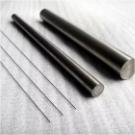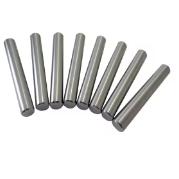**The Mystery Metal: What’s That Plate Behind Your Brake Pad?**
(What Is The Metal Plate On The Back Of A Brake Pad)
Ever peered into your wheel well and noticed your brake pads? Look closer. Stuck firmly to the back of the friction material, you’ll find a thin piece of metal. It might seem insignificant, just a bit of hardware. But this little plate, often called the backing plate or shim, is a crucial player in your car’s stopping power and your driving comfort. Ignoring it can lead to annoying noises, reduced performance, and even faster wear. Let’s peel back the layers and discover why this unsung hero deserves your attention.
**1. What is the Metal Plate on the Back of a Brake Pad?**
Think of the brake pad itself. It has two main parts. The part you see pressing against the brake rotor is the friction material. This is the stuff that creates the grip to slow your car down. Glued or riveted firmly to the back of this friction material is the metal plate. Its job isn’t to create friction. Instead, it acts like a rigid backbone. This plate provides essential structure and support to the softer friction material. Without it, the pad would be floppy and weak. It wouldn’t hold its shape under the enormous pressure applied during braking. The plate also serves as the mounting point. It’s the part that slides into the caliper bracket or presses against the caliper piston. It’s the interface between the moving parts of the brake system and the friction material doing the hard work. Materials matter. Most backing plates are made from sturdy steel, chosen for its strength and durability. Some high-performance or quieter pads might use different alloys or coatings for extra benefits.
**2. Why is the Metal Plate Essential for Brakes?**
That metal plate is far more than just a holder. It performs several vital, often unseen, functions. First, it provides critical structural integrity. Braking generates immense heat and pressure. The friction material alone couldn’t withstand this force without cracking or crumbling. The rigid plate holds it firmly in place, distributing the pressure evenly across the entire pad surface. This ensures consistent contact with the rotor. Second, it acts as a massive heat sink. Braking converts motion energy into heat energy – lots of it. The metal plate absorbs a significant amount of this heat from the friction material. It then helps dissipate that heat into the caliper and surrounding air. This heat management is vital. It prevents the friction material from overheating, which can cause glazing (a hard, shiny surface that reduces grip) or even complete failure. Third, the plate is a key player in noise reduction. Brake squeal and vibration are common annoyances. The plate helps dampen these unwanted sounds. It stiffens the assembly, preventing high-frequency vibrations that cause squealing. Many plates also have special shims or coatings bonded to them specifically to absorb vibrations and noise.
**3. How Does the Metal Plate Work During Braking?**
Imagine pressing the brake pedal. Your foot’s force travels through hydraulics, pushing the caliper piston outwards. The piston presses directly against the metal backing plate of the inner brake pad. The plate instantly transfers this force uniformly to the entire surface of the friction material. This presses the friction material firmly against the spinning rotor. Simultaneously, the caliper body itself slides or pivots. This action pulls the outer brake pad (also supported by its backing plate) inward against the other side of the rotor. The rigid plate ensures the pad doesn’t flex or bend unevenly. It keeps full, flat contact with the rotor surface. This is crucial for smooth, effective stopping power. Meanwhile, the friction generates intense heat. The metal backing plate soaks up this heat like a sponge. Its large surface area helps pull heat away from the critical friction interface. This heat then slowly radiates outwards into the caliper and airflow around the wheel. The plate’s stiffness also fights vibrations. As the pad grips the rotor, microscopic vibrations naturally occur. The plate’s mass and rigidity help suppress these vibrations before they can amplify into audible squeals or judders. Specialized shims attached to the plate add another layer of damping.
**4. Applications: Where Do These Plates Make a Difference?**
The metal backing plate is fundamental. You’ll find it on brake pads in virtually every vehicle with disc brakes. That includes your daily commuter car, rugged pickup trucks, family SUVs, high-performance sports cars, and even many motorcycles. Its importance scales with the vehicle’s demands. In a small city car, the plate ensures quiet, reliable stopping during everyday errands. For a heavy-duty truck hauling a load down a mountain pass, the backing plate is absolutely critical. It must handle extreme heat and pressure without warping or failing. The plate’s role as a heat sink becomes paramount here, preventing brake fade. Performance driving pushes brakes to their limits. On a racetrack, brakes experience repeated hard stops from high speeds. The backing plate in performance pads is often designed for maximum rigidity and heat dissipation. It might use thicker steel or special alloys. It ensures the friction material stays intact and performs consistently lap after lap. Even in electric vehicles, which use regenerative braking but still rely on friction brakes for hard stops or low speeds, the backing plate performs its essential structural and thermal roles.
**5. Metal Plate & Brake Pad FAQs**
* **Q: Can I drive without the metal plate if it falls off?**
A: Absolutely not. The plate provides vital support and heat management. Driving without it risks the pad cracking, overheating severely, or even disintegrating. It’s unsafe. Replace the pad immediately.
* **Q: Why does my brake sometimes squeal even with the plate/shim?**
A: Squeal has many causes. Worn pads, lack of lubrication on contact points, glazed rotors, or damaged/ineffective shims can all be culprits. The plate/shim helps, but it can’t fix every issue. Proper diagnosis is needed.
* **Q: Do all brake pads have this metal plate?**
A: Yes, virtually all disc brake pads have a metal backing plate. It’s a core structural component. Some very cheap, low-quality pads might have flimsy plates, which is a red flag. The shim (noise-reducing layer) attached to the plate is sometimes optional or omitted on basic pads.
* **Q: Can the metal plate itself wear out?**
A: The plate doesn’t wear like friction material. It can, however, become damaged. Rust can weaken it, especially around the edges. Extreme heat can cause warping. Bent tabs or ears (where it clips into the caliper) prevent proper movement. Physical damage from impacts is also possible. Inspect plates when changing pads.
* **Q: Are expensive pads better because of the plate?**
(What Is The Metal Plate On The Back Of A Brake Pad)
A: Often, yes. Higher-quality pads typically use better-grade steel for the backing plate. They are less likely to rust or warp. They almost always include high-quality shims or special coatings (like rubberized layers or ceramic paints) bonded to the plate for superior noise and vibration damping. This contributes significantly to quieter, smoother braking.
Inquiry us
if you want to want to know more, please feel free to contact us.


